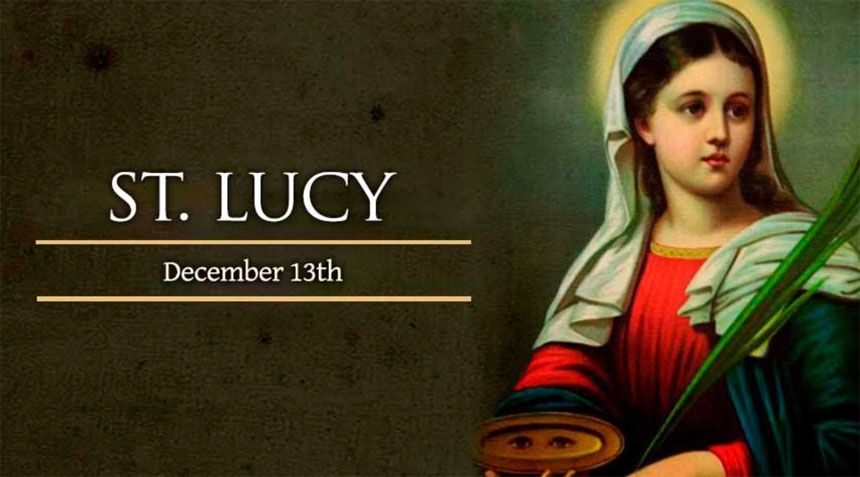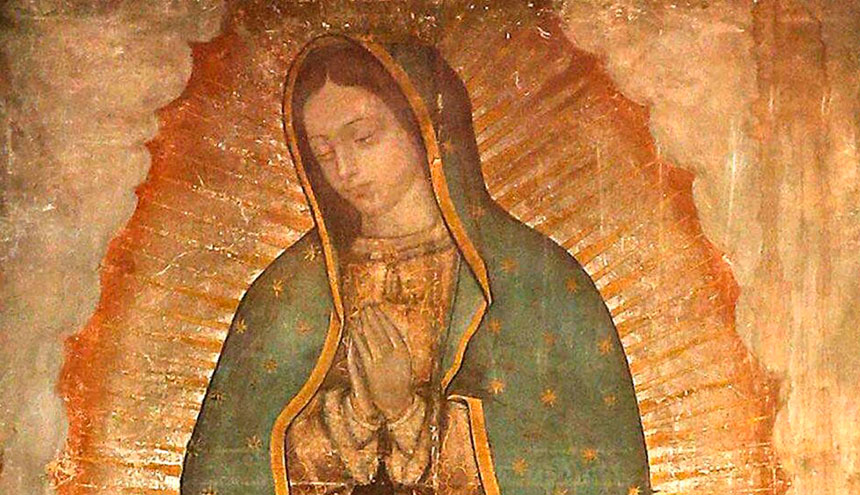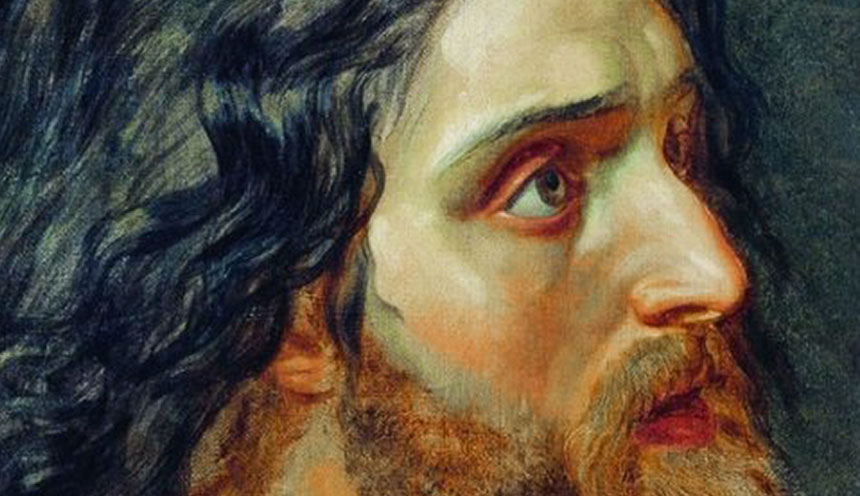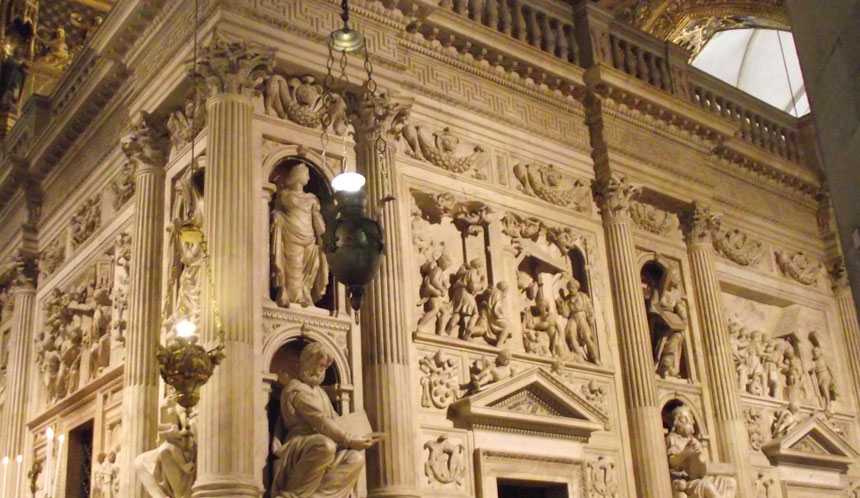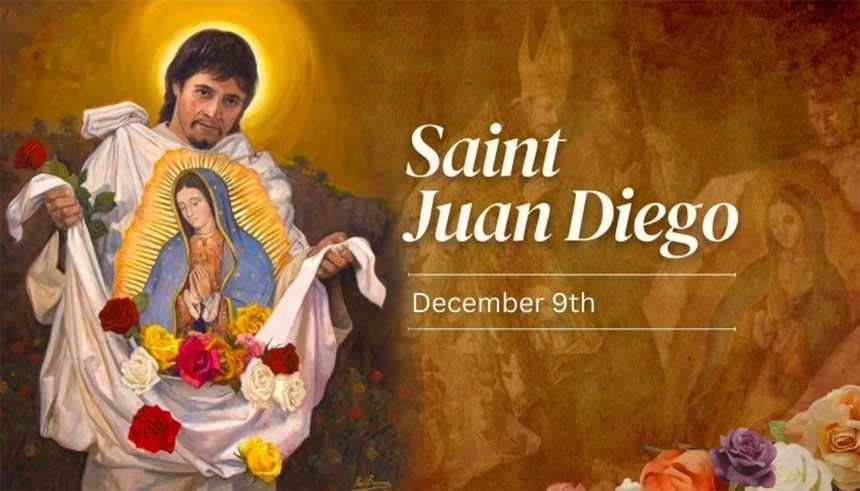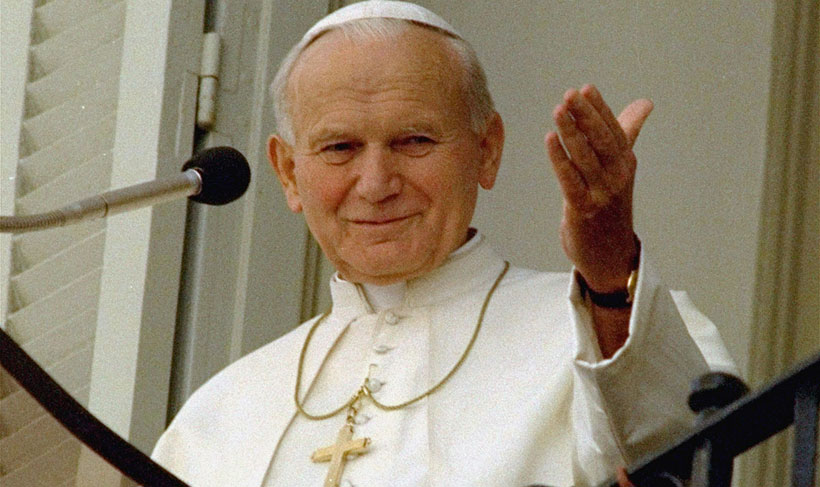• October 22, 2020, Holy Rosary at 7:30 pm ET, at YouTube.com/TheRosaryNetwork
• Audio Podcast available by 6:00 pm ET
Friends of the Rosary,
Today is the Memorial Day of St John Paul II. The beloved and charismatic Polish Pope exercised his ministry with a tireless missionary spirit and showed an extraordinary testimony of holiness.
He is most remembered for his role in the fall of communism, along with his love for families and young people, and his world travels.
On May 13, 1981, an attempt was made on his life in Saint Peter’s Square. Saved by the hand of the Virgin Mary, following a lengthy stay in the hospital, he forgave the attempted assassin.
Karol Jozef Wojtyla died in 2005 in Rome and was canonized in 2014.
He instituted through the encyclical Rosarium Virginis Mariae the Luminous Mysteries of the Rosary which we pray today.
He said about the Rosary, his favorite prayer: “To pray the Rosary is to hand over our burdens to the combined merciful hearts of Christ and His Mother”.
[Written by Mikel A | The Rosary Network, New York]
—-
For following the example of holiness of St John Paul II.
For defending the Catholic doctrine regarding the sanctity of marriage, as it is formulated in the Catechism and the Sacred Scriptures, and as it was expressed by the last Pope who was canonized, St John Paul II.
For the end of the Covid pandemic and economic downturn, not in our desired time, but in Jesus’ and Mary’s time.
St. John Paul II pray for us!
—-
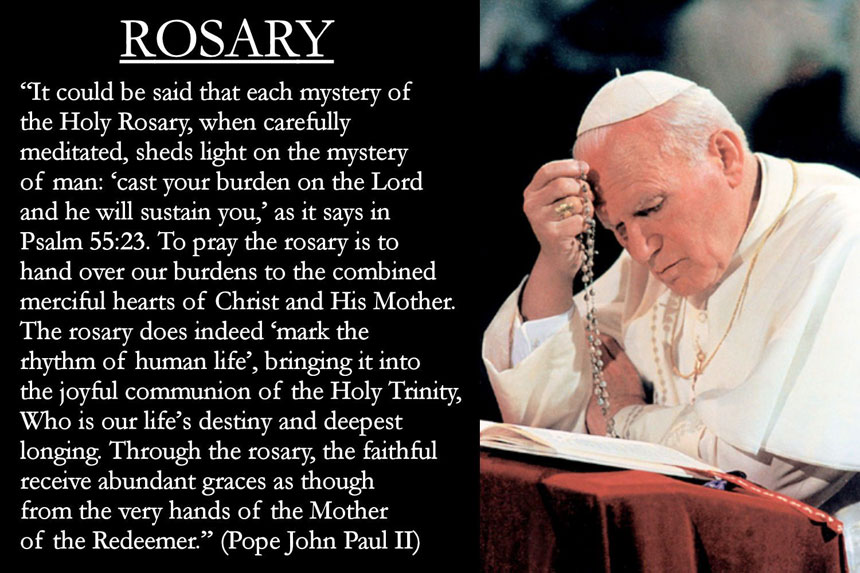
–––
Seven Tips to Fruitfully Pray the Rosary According to John Paul II
The rosary prayer had an important place in the life of St. John Paul II. He himself testified: “The Rosary accompanied me in times of joy and trials. I entrusted it with so many worries; In it I always found comfort.”
1- Peaceful rhythm and a certain delay to think of the mystery
Many people pray the rosary in a hurry, agitated, impatient, that is, let the reflection of the immediate world take care of this prayer. The rosary is contemplative and requires a quiet rhythm of prayers and reflection on each mystery that is being prayed. Each well-meditated mystery illuminates the mystery of man.
2- You can fix an icon or other visible and figurative element
To enunciate the mystery with the possibility of fixing an icon or other visible and figurative element that represents it is like opening a scenario on which attention is concentrated. It facilitates the concentration of the spirit in the mystery, especially when the Rosary is recited in particular moments of prolonged silence.
3- Read a Bible passage
To give biblical grounding and depth to meditation, it is helpful for the enunciation of the mystery to be accompanied by the proclamation of a biblical allusion, which, depending on the circumstances, maybe more or less long. This helps to hear the voice of God and, even on certain occasions, this Scripture passage may come with a later comment.
4- Mute
After the enunciation of the mystery and the proclamation of the Word, it is convenient to pause for a while and fix your gaze on the meditated mystery before beginning vocal prayer.
5- To emphasize the name of Christ by adding a clause evocative of the mystery
Adding to the name of Jesus a clause evocative of the mystery intensifies the Christological faith, especially in public recitation. For example, if we contemplate the mystery of the birth of Jesus, we can pray: “Hail Mary … fruit of your womb Jesus”, “born in Bethlehem.” Holy Mary … In every mystery contemplated, a clause is added to help with meditation.
6- Highlight the “Glory”
The trinitarian glorification of every decade is the apogee of contemplation, for we are continually in the presence of the mystery of the three divine Persons to praise, worship, and thank them. In public recitation, one can sing to give greater prominence to “Gloria”.
7- Finish each of the mysteries with a prayer
In this way, the contemplation of the mysteries can better manifest all its fruitfulness, since it will have more connection with the Christian life and the specific fruits of the meditation of this mystery will be obtained. St. John Paul teaches that to walk with Mary in the scenes of the Rosary is like attending Mary’s “school” to read Christ, to penetrate her secrets, to understand her message. Of all human beings, no one like her knows Christ better. Therefore, it is necessary to pray properly the rosary, because thus Christ is formed in the disciple fully.


